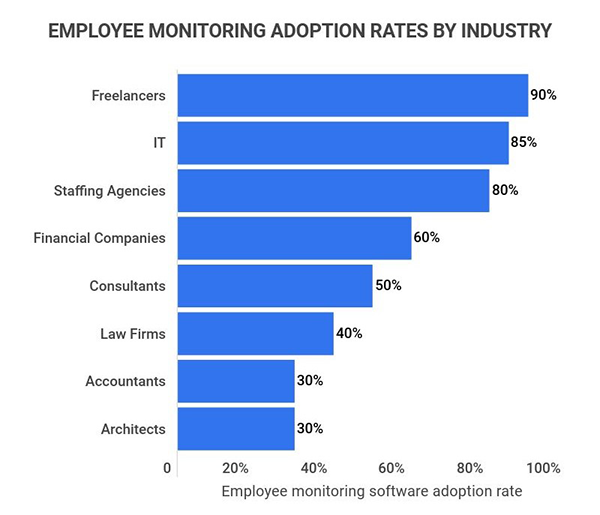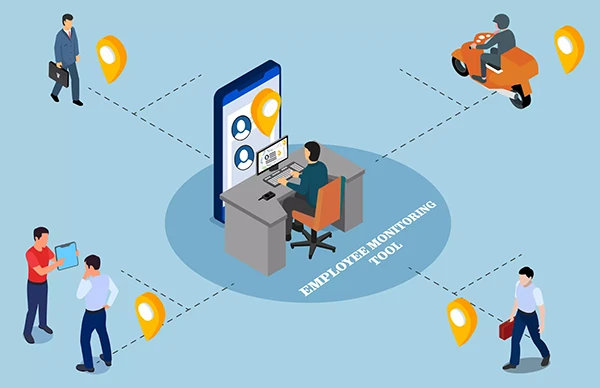
Every employer wants their employees to stay productive and engaged. Helen Keller once said, “Alone we can do so little. Together we can do so much” and this will only be possible when the employees are growing and learning new things along with their employers.
Companies and businesses are trying new ways to increase the efficiency and performance of their employees, and one of the best ways turned out to be productivity monitoring software.
This software can track the performances of each person working and can provide instant feedback, tips to improve, and support based on real-time data. This article will tell you how productivity monitoring software is being used and how useful they are.
Any business that has employee performance monitoring software is aware of how useful this tool is because this enables managers to track the work of each worker in different ways; like productivity levels, application usage, and time spent on any certain task. Real-time data will determine any issue that is arising and will inform the manager who can resolve the issue and give the required assistance.
Earlier performance reviews were given periodically which was a slow process, but real-time feedback helps in taking instant action. There are several amazing productivity monitoring software and one of the best is Insightful.
This software offers features like comprehensive analytics on workforce activities, time and attendance tracking, productivity management, and more. Managers can keep a close eye on everything that their employees are doing with this tool.

As stated, real-time reviews and feedback are vital to fostering a culture of continuous growth in any business. When employees receive rapid feedback for their work, they can adjust their work patterns and methods accordingly without needing to wait for a formal review session to occur.
This immediacy enforces momentum, ascertaining that minor problems are not overlooked for them to escalate into major issues. Suppose a team member is spending inordinate time on unimportant tasks. The productivity monitoring software notifies the managers, who then offer assistance to focus on more relevant work.
This prescriptive method, facilitated by the software, has proven more effective as it happens in real-time, and members of staff can immediately follow up with the advice and mold their performance. What’s more, real-time feedback by management tends to have salutary psychological benefits.
A study concluded that employees become more enthusiastic and motivated to perform well when they receive prompt feedback. When they receive constructive responses as the event happens, it instills courage and a positive view of things to take commitment and ownership of their work.
Productivity monitoring software also significantly facilitates ongoing employee development. Managers can utilize the continuous data the software provides to pinpoint skills gaps and provide individualized support and remediation.
This continuous mentoring model guarantees that team members are always learning on the go and growing, which also optimizes their performance and job retention. Several widely used remote monitoring solutions, like Insightful, enable managers to set performance prerequisites or benchmarks and measure employees’ work efficiency over time.
If an employee seems to be facing certain problems reaching their goals, the software illuminates the areas that could be remedied and improved. Following that, administrators can offer personalized coaching programs to help them work through difficulties and reach their objectives.
Managers can also use real-time data to facilitate a more harmonious work environment. If an employee continuously outshines their fellow workers, managers can use this data to offer accolades and awards for their consistent efforts, fostering a positive workplace dynamic.
In contrast, if an employee is falling short of expectations, real-time feedback enables managers to deliver early guidance and help resolve the issue before it affects their level of efficiency.

While the major purpose of productivity monitoring software is entwined with improved performance governance, there’s also a side where it supports employee well-being.
As it tracks employees’ time allotment and workload, managers can use that real-time data to reduce task assignments and not compel them to work excessive hours. This promotes and encourages employees to maintain a consistent and healthy work-life balance.
For example, if an employee has persistently worked late into the night for some time, the software would recognize it, as this could show signs of exhaustion and stress.
Managers can then step forward to reassign tasks or provide critical support to avoid employee fatigue. This way, the productivity monitoring software helps build a more ecologically friendly work culture where the workforce can maximize their potential without trading off their well-being.
Despite all the positive aspects of effective monitoring software, it does pose a bit of a puzzle about its capability to generate a sense of intelligence. However, this matter can be resolved when the software is implemented responsibly and with integrity.
It can help encourage cooperation between management and the workforce. When the company is transparent and provides clarity on the software’s purpose in the business, it mitigates employees’ particular concerns and encourages a sense of personal responsibility among them.
When employees know that the data is used to offer valuable reviews, advice, and growth opportunities, they will more easily adapt to the technology. On top of that, transparent sharing of productivity data leads to more open relations between managers and employees.
When both parties have easy access to the same data, honest conversations about work performance and growth may take place.
Fun Fact
Employee productivity monitoring software is said to increase the overall profit of a business because of increased productivity in employees!
Let’s do a case study, suppose there’s an agency specializing in marketing, and they decide to use productivity monitoring software so that efficiency of their employees increases. Keep in mind before using the software, the performance of the employees was poor, they lacked knowledge and their work was never on time.
However, after the installation, managers were able to keep records and track the progress of each employee. The manager also gave straight-forward feedback based on real-time data. But what happened next? Managers realised that the work efficiency of employees has increased in just a couple of months.
Those who were having trouble with time management are more productive now, and this is because of the feedback they had been given. For those who were working overtime and stressing, their work was adjusted. Employees started prioritizing their work and worked through their problems.
What did you learn from this case study? This case study shows that feedback based on real-time data had a positive impact on its employees and their productivity increased. They were able to create a good working environment.
